Excerpts from Jim Conrad's
Naturalist Newsletter
from the January 28, 2018 Newsletter issued from Rancho Regenesis in the woods ±4kms west of Ek Balam Ruins; elevation ~40m (~130 ft), N20.876°, W88.170°; north-central Yucatán, MÉXICO
"JUTE"
At the garden's edge a certain weed grew so entangled in the general weedy luxuriousness that despite its weird fruits it was easy to overlook, but hard to photograph amid all the weeds' visual clutter. A disentangled branch of the diffusely branching, sprawling, tough-stemmed annual plant is shown below, held against the sky:
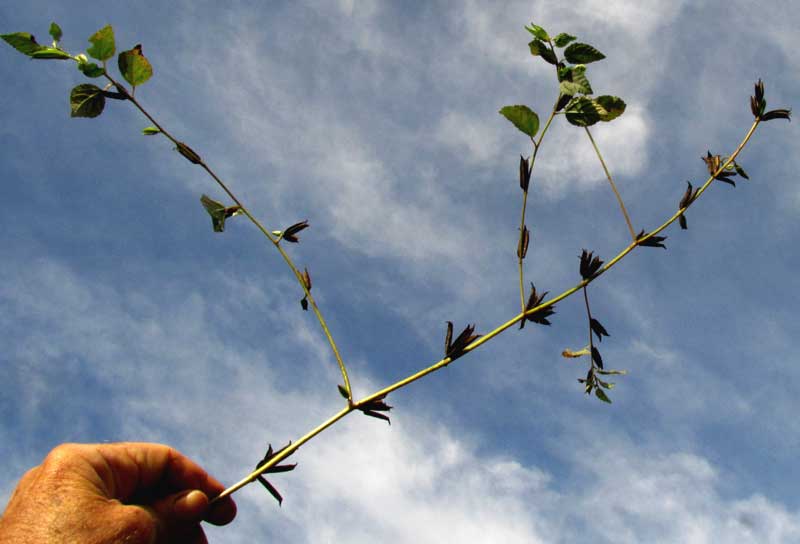
When that branch was plucked from the main stem, very tough, pliable fibers tore from the stem, as shown below:
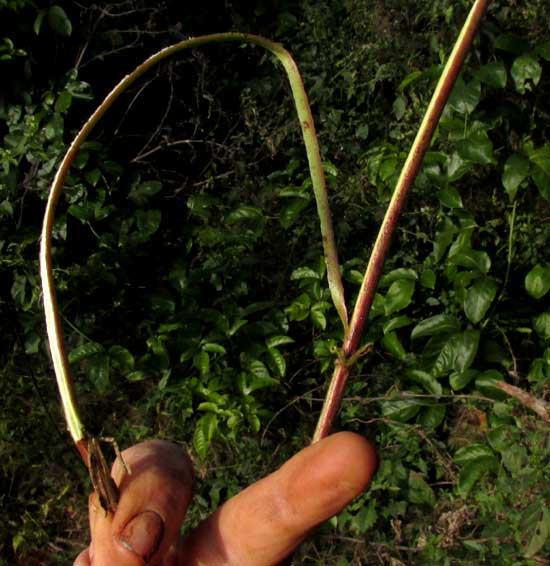
Such fibers are typical of the big Hibiscus or Mallow Family, the Malvaceae, as were the plant's simple leaves arranged alternately with one another along the stem, and the leaves' margins bearing low teeth, as seen below:
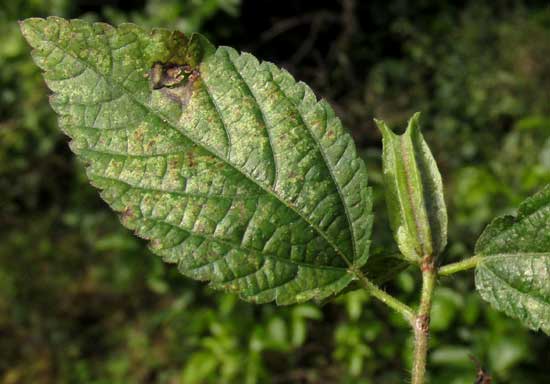
In that picture, the most interesting feature is the immature fruit at the stem's tip. On other stems mature, capsular fruits were splitting open to release their seeds, as shown below:
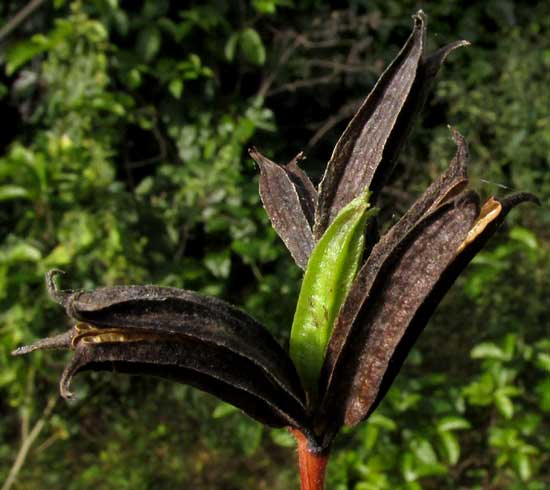
Capsules that already have lost all their seeds, showing the interior compartments in which the seeds had lain are shown below:
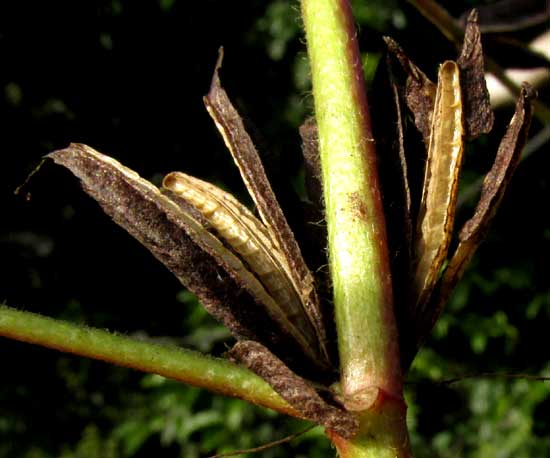
This plant is fairly similar to the Slippery Bur, Corchorus siliquosus we looked at last month, profiled at www.backyardnature.net/mexnat/slippery.htm
The most obvious difference is that Slippery Bur's fruits are much longer and slenderer than our current plant's, and they lack the conspicuous spreading teeth at the fruits' tops. However, our present plant's fruits, if elongated, made thinner, and if the teeth at the top were reduced, structurally would be the same. Therefore, maybe we had another species of the genus Corchorus.
Which we did. This is CORCHORUS AESTUANS, a good old Linnaeus name bestowed in 1759. One reason Linnaeus knew about it is that Corchorus aestuans occurs throughout the world's tropical regions. Some experts believe it's native to the American tropics and was introduced long ago into Africa and Asia, while others think it's probably the other way around. Wherever it originated, today it's widely cultivated in many places because of its tough stem fibers. Among its English names are West African Mallow, East Indian Mallow and Jute.
Most of us have heard of the Jute plant grown for its bast fiber, but more commonly the name Jute is applied to another species of Corchorus -- Corchorus capsularis. That's why I've placed our garden Jute's name between quotation marks. The bast of our current Corchorus siliquosus is considered to be coarser and less durable than that derived from Corchorus capsularis. By the way, that word "bast" refers to any fibrous material derived from the phloem of a plant, for use as fiber. And "phloem" is the vascular tissue in plants that conducts sugars and other metabolic products downward from the leaves, after being photosynthesized there.
Our present garden Jute has other uses than fiber. In some countries its leaves are eaten. In northeastern India the root is cooked as a vegetable. In traditional African medicine an extract of the roots or leaves is taken for the treatment of gonorrhea. In the Congo, leaves are squeezed and the sap is sniffed for the headache. And there are a number of its other uses as well.